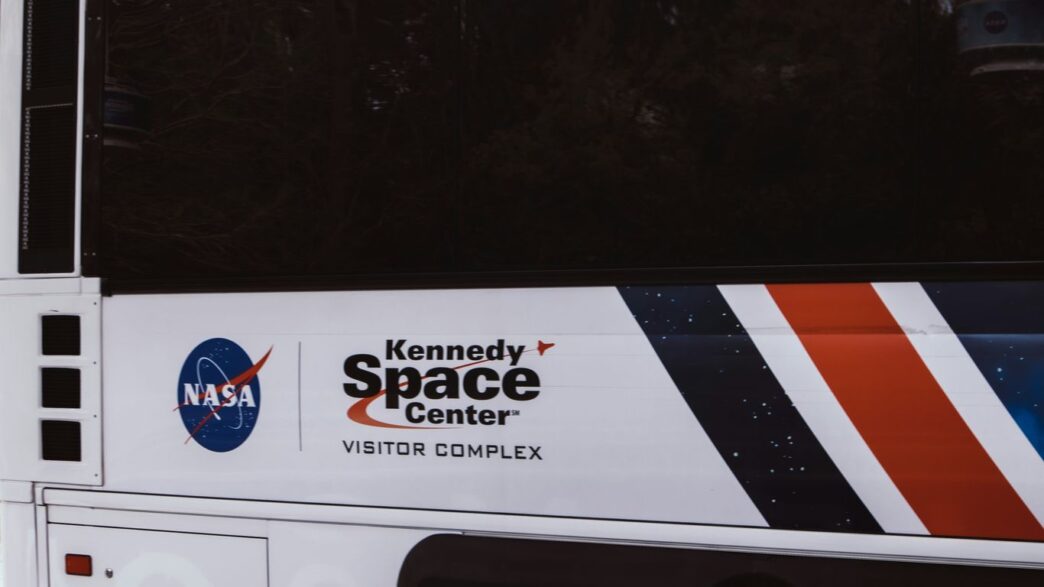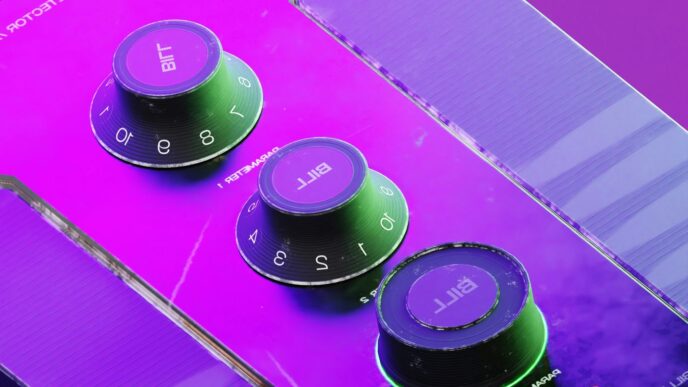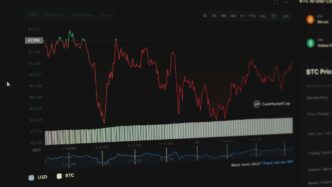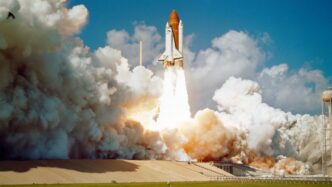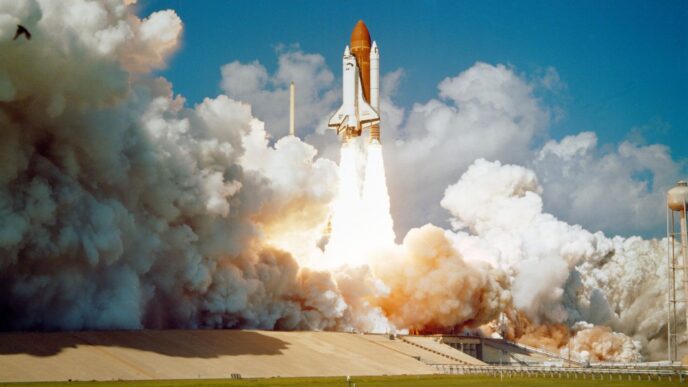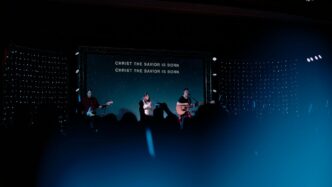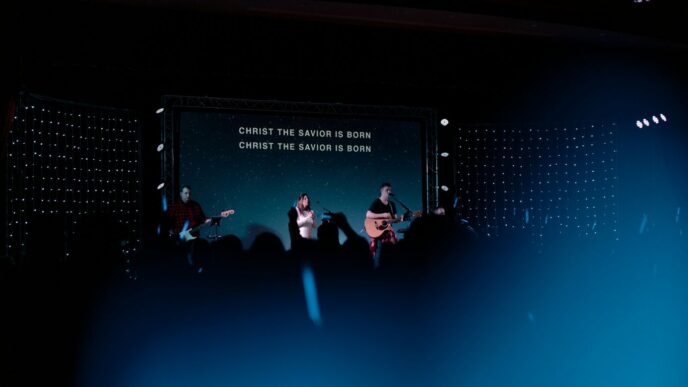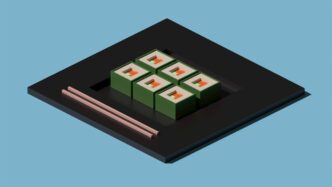The Crew-9 Mission Unveiled
Alright, let’s talk about the Crew-9 mission. This is a pretty big deal, marking a new chapter for how we get astronauts to the International Space Station (ISS). It’s not just about sending people up there; it’s about the whole process, the international teamwork, and what they’ll be doing once they arrive.
Astronauts Embark on a Six-Month Stay
The Crew-9 mission is set to be a long one, with the astronauts spending about six months living and working aboard the ISS. This extended stay allows for a significant amount of scientific research and station maintenance. Think of it like a long-term assignment, where the crew really gets into the rhythm of life in orbit, conducting experiments and keeping the station running smoothly. It’s a serious commitment, requiring a lot of training and mental preparation.
International Cooperation in Orbit
Space exploration has always been a global effort, and Crew-9 is no exception. This mission includes astronauts from different countries, highlighting the importance of collaboration. Working together in space, especially on a platform like the ISS, breaks down barriers and shows what we can achieve when nations pool their resources and knowledge. It’s a testament to shared goals and peaceful scientific pursuit.
Launch From Cape Canaveral Space Force Station
The journey for Crew-9 begins at the Cape Canaveral Space Force Station in Florida. This location has been a historic launch site for decades, and it’s where the powerful Falcon 9 rocket, carrying the Crew Dragon capsule, lifts off. The launch itself is a complex operation, requiring precise timing and favorable weather conditions. Seeing that rocket ascend is always an awe-inspiring moment, symbolizing the start of a new adventure.
Here’s a quick look at some key aspects:
- Mission Duration: Approximately six months.
- Crew Composition: International astronauts from NASA and Roscosmos.
- Launch Site: Cape Canaveral Space Force Station, Florida.
- Primary Destination: International Space Station (ISS).
SpaceX Crew Dragon: A Reliable Transport
Vehicle Specifications and Capabilities
The SpaceX Crew Dragon is a pretty neat piece of engineering, designed specifically to ferry astronauts and cargo to the International Space Station and back. It’s not just a simple capsule; it’s a sophisticated vehicle. The capsule itself stands about 27 feet tall and measures 13 feet across. This spacecraft is built for autonomy, meaning it can handle a lot of the journey on its own, which is a big deal for crew safety. It’s capable of carrying up to seven astronauts, though for NASA missions like Crew-9, it often carries fewer to make room for return cargo. Speaking of cargo, it can bring back a significant amount of scientific research and equipment, around 6,600 pounds, which is pretty important for getting those time-sensitive experiments back to Earth.
Autonomous Operations for Crew and Cargo
One of the standout features of the Crew Dragon is its ability to operate autonomously. This means that once it’s launched and on its way, it can manage its trajectory, docking, and undocking procedures with minimal input from the crew or ground control. This automation is a result of advanced flight computers and sophisticated software. It’s designed to handle both routine operations and, importantly, emergency situations. For instance, in the unlikely event of an abort during launch, the capsule has systems in place to pull away from the rocket and bring the crew back to safety. This autonomous capability really streamlines the process of getting to and from the ISS, reducing the workload on the astronauts and mission controllers.
The Role of the Capsule’s Trunk
When you look at the Crew Dragon, you’ll notice it has a section behind the main capsule called the ‘trunk’. This isn’t just empty space; it’s a really functional part of the spacecraft. The trunk houses critical systems like the solar arrays that provide power to the capsule and the radiators that help manage its temperature. It also contains fins that are designed to provide aerodynamic stability. This is particularly important during the ascent phase and in the very unlikely scenario of an emergency abort, where these fins can help control the capsule’s orientation as it re-enters the atmosphere. So, while the capsule is where the crew lives, the trunk is where a lot of the essential ‘behind-the-scenes’ work happens to keep everything running smoothly and safely.
The Falcon 9 Rocket Powering Crew-9
So, the Falcon 9 rocket. This is the workhorse that gets the Crew Dragon, and by extension, our astronauts, up to the International Space Station. It’s a pretty impressive piece of engineering, standing about 229 feet tall, which is roughly the height of a 20-story building. And it’s 12 feet wide.
Vehicle Dimensions and Thrust
Let’s break down the power. The first stage of the Falcon 9 is where the real muscle is. It has nine Merlin engines, and together they produce a staggering 1.71 million pounds of thrust at liftoff. That’s a lot of force pushing that rocket skyward. The second stage, which takes over after the first stage separates, has one engine that provides about 210,000 pounds of thrust. It’s designed to get the spacecraft the rest of the way into orbit.
Propellant Details and Reusability
What fuels this beast? Both stages use a combination of RP-1, which is a highly refined kerosene, and liquid oxygen. This mix is pretty standard for rockets, but what’s really cool about the Falcon 9 is its reusability. SpaceX has made a big deal about this, and it’s a game-changer for spaceflight. The idea is that the first stage can come back down and land, ready to be used again for future missions. This cuts down on costs and makes space access more frequent.
First Stage Separation and Landing
After the initial climb, the first stage does its job and then separates from the second stage. This is a critical moment. Once separated, the first stage performs a series of maneuvers, including reigniting its engines, to guide itself back to Earth. It aims for a landing at one of SpaceX’s designated landing zones, like Landing Zone 1 here at Cape Canaveral Space Force Station. It’s quite a sight to see it land vertically, almost like a controlled descent. This reusability is a huge part of why missions like Crew-9 are possible.
Scientific Endeavors Aboard the ISS

Advancing Knowledge in Microgravity
The International Space Station (ISS) isn’t just a place for astronauts to live; it’s a unique laboratory where science happens that just can’t be replicated on Earth. During the Crew-9 mission, the astronauts are continuing this tradition, working on experiments that push the boundaries of what we know. Think about how flames behave differently without gravity pulling them down – that’s the kind of stuff they’re studying. They’re also looking closely at how our bodies, specifically cells and platelets, react when they’re in space for a long time. This kind of research is super important for keeping astronauts healthy on longer trips.
Research for Future Deep Space Missions
Many of the experiments on the ISS are like practice runs for future journeys to the Moon and Mars. Understanding how plants grow in space, for example, is key to figuring out how we can grow food on long missions. They’re also testing materials to see how they hold up in the harsh space environment. This work directly supports NASA’s Artemis program, which aims to send humans back to the Moon and eventually to Mars. The data gathered by crews like the one on Crew-9 helps engineers design better spacecraft and life support systems for those ambitious deep space adventures.
Over 200 Experiments Planned
The Crew-9 mission is packed with scientific activity. The astronauts are involved in a wide range of studies, with well over 200 experiments and technology demonstrations on the agenda. These investigations cover a lot of ground:
- Studying the physics behind things like stellar supernova explosions.
- Monitoring how different ways of watering plants affect their growth in orbit.
- Investigating a specific B vitamin that might help reduce a condition called Spaceflight-Associated Neuro-ocular Syndrome, which can affect astronauts’ vision.
- Collecting samples from the outside of the space station to see what kinds of microbes might be living there.
It’s a busy schedule, but each experiment adds a piece to the puzzle of space exploration and human health beyond Earth.
Crew-9 Astronauts and Their Roles
Nick Hague’s Extensive Spaceflight Experience
Nick Hague is no stranger to the final frontier. With a background as a U.S. Space Force colonel and test pilot, he’s already spent a significant amount of time off-world. Across three previous missions, Hague has logged over 374 days in space. He’s seen action in various roles, including a deployment to Iraq, which likely honed his ability to work under pressure. Hague often talks about how spaceflight brings people together, emphasizing the international teamwork required to make missions happen. He sees the work in orbit as strictly focused on the mission at hand, a testament to his disciplined approach.
Aleksandr Gorbunov’s Engineering Background
Roscosmos cosmonaut Aleksandr Gorbunov brings a strong engineering foundation to the Crew-9 mission. Born in Russia, he studied spacecraft and upper stage engineering at the Moscow Aviation Institute. His training also included aircraft and engine repair, giving him a practical, hands-on understanding of complex machinery. Before becoming a cosmonaut in 2018, Gorbunov served in the Russian Air Force and worked as an engineer for Rocket Space Corp. Energia, a company involved in building spacecraft and supporting launches. He’s looking forward to comparing his experience flying the Russian Soyuz with the SpaceX Dragon, noting that the flight engineer role on Soyuz is similar to a mission specialist on Dragon, both focused on crew safety.
Suni Williams’ Record-Breaking Spacewalks
Suni Williams is a seasoned astronaut with a remarkable history in space. A retired U.S. Navy captain, she’s a helicopter pilot and has completed three spaceflights. Williams holds the distinction of being the first person to run the Boston Marathon in space, not once, but twice – in 2007 and again in 2025. Her adventurous spirit is evident in her approach to space exploration, always looking for innovative solutions to problems. She believes that imagination is key, but also acknowledges the hard work involved in making those ideas a reality. Williams finds great joy in the problem-solving aspect of working in the space program, constantly asking questions and pushing boundaries.
Flexibility in NASA’s Commercial Crew Program
NASA’s approach to getting astronauts to the International Space Station isn’t a one-size-fits-all deal. The Commercial Crew Program, which partners with companies like SpaceX and Boeing, is built with a good amount of wiggle room. This flexibility was really put to the test with the Crew-9 mission.
Integration with Boeing Starliner Test Flight
So, the Boeing Starliner had its first crewed flight test, carrying astronauts Butch Wilmore and Suni Williams. Things didn’t go exactly as planned up there, with some helium leaks showing up. Instead of rushing them back, NASA made the call to keep them on the ISS for a longer stay. This meant that the original Crew-9 astronauts, Zena Cardman and Stephanie Wilson, were reassigned to a different mission. It’s a good example of how NASA prioritizes crew safety and mission objectives over sticking to a rigid schedule. The Starliner capsule itself was later returned to Earth uncrewed, giving engineers a chance to figure out what went wrong and how to fix it before the next crewed flight.
Adapting Crew Assignments for Mission Success
This whole situation with Starliner directly impacted the Crew-9 mission. Because Wilmore and Williams needed to stay on the ISS longer, they ended up coming back to Earth on the SpaceX Crew Dragon spacecraft that was originally slated for Crew-9. This meant Nick Hague and Aleksandr Gorbunov, the assigned Crew-9 astronauts, had to adjust their plans. It shows that NASA is ready to shuffle crew assignments when needed to make sure missions can still happen and that astronauts are where they need to be. It’s all about making the best of the situation to keep the science going and the astronauts safe.
Ensuring Assured Crew Access to Space
Having multiple commercial partners like SpaceX and Boeing is key to NASA’s strategy. It means there’s always a way to get astronauts to and from the space station, even if one vehicle runs into issues. This redundancy is what NASA calls "assured crew access to space." The Crew-9 mission, with its adjustments due to the Starliner test flight, highlights how this program is designed to be robust. It’s not just about having one reliable ride; it’s about having options and the ability to adapt when unexpected things happen. This flexibility is what allows NASA to continue its important work in orbit.
Crew-9’s Return to Earth
Safe Splashdown After Six Months
After what felt like a blink of an eye, but was actually a full six months, the Crew-9 mission has successfully concluded. The SpaceX Crew Dragon capsule, carrying NASA astronauts Nick Hague and Suni Williams, along with Roscosmos cosmonaut Aleksandr Gorbunov, made a smooth splashdown on March 18, 2025. It landed in the waters off the coast of Tallahassee, Florida. This marks the end of their extended stay aboard the International Space Station, a period filled with scientific research and international collaboration.
Welcoming the Crew Back Home
It’s always a big moment when our astronauts return. The recovery teams were on standby, ready to bring the crew back to solid ground after their time in orbit. Imagine the feeling of stepping out of the capsule, feeling gravity again after so long! It’s a mix of relief and excitement, I bet. They’ve been away for a significant chunk of time, contributing to science and pushing the boundaries of what we know about space.
Lessons Learned from the Mission
Every space mission, no matter how routine it seems, is a learning experience. For Crew-9, the time spent on the ISS provided valuable data for future deep space endeavors, like the Artemis missions. The crew’s experiences, the performance of the Crew Dragon and Falcon 9, and the day-to-day operations in orbit all contribute to refining our methods for longer, more ambitious journeys. The flexibility shown in adapting crew assignments, especially with the integration of the Boeing Starliner test flight, highlights NASA’s commitment to ensuring continuous access to space for its astronauts. This mission, like all that came before it, adds another chapter to our ongoing story of space exploration.
Looking Ahead
So, Crew-9 wrapped up its mission, and it really shows how far we’ve come with space travel. It wasn’t just about getting astronauts to the space station; it was about figuring out how different spacecraft work together and pushing the boundaries of what we can do up there. With missions like this, we’re not just visiting space, we’re starting to live and work there, paving the way for even bigger adventures to the Moon and Mars. It’s pretty amazing to think about what’s next.


